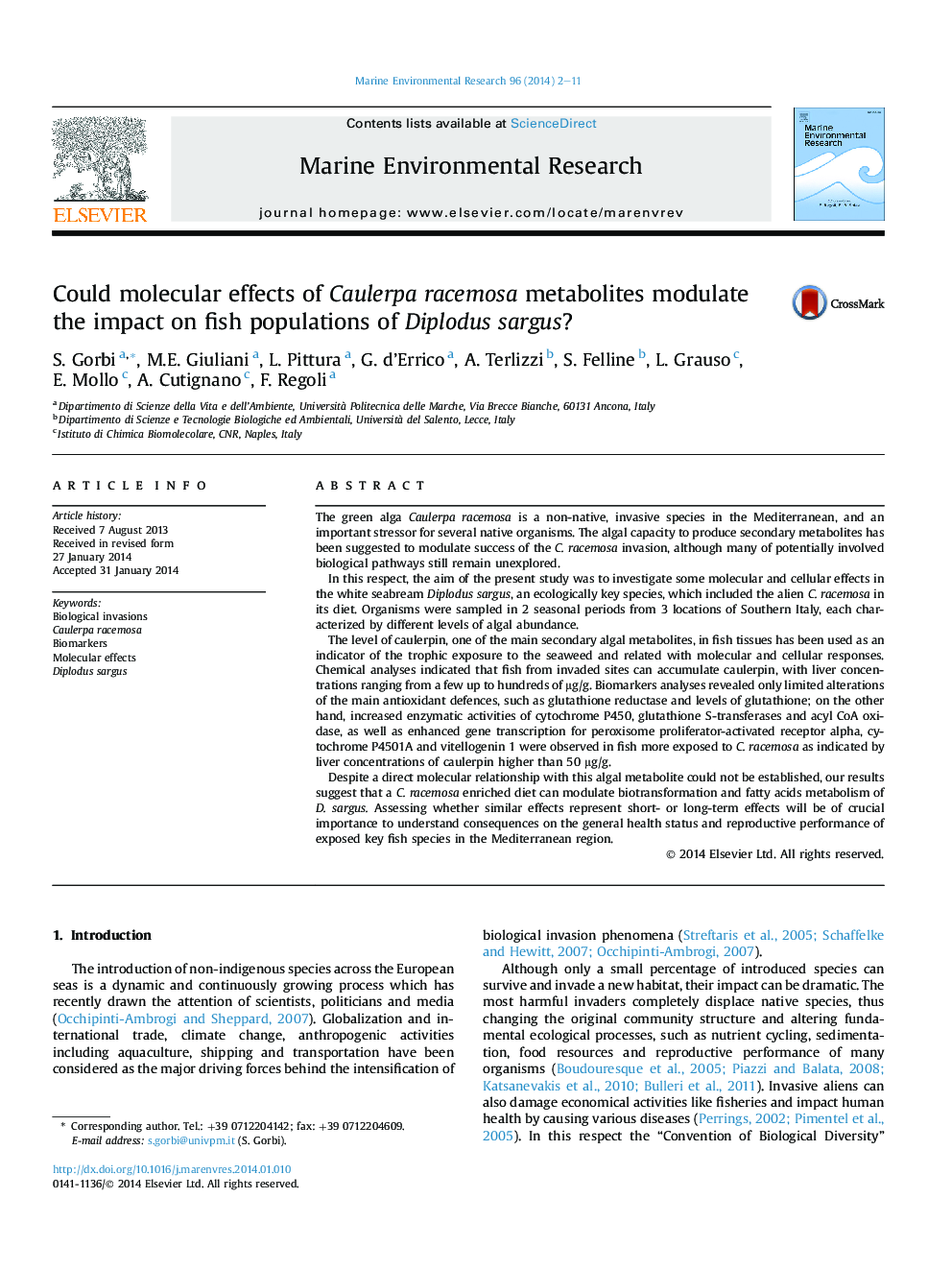| Article ID | Journal | Published Year | Pages | File Type |
|---|---|---|---|---|
| 4550810 | Marine Environmental Research | 2014 | 10 Pages |
•Molecular effects of Caulerpa racemosa were investigated in seabream Diplodus sargus.•C. racemosa modulates biotransformation and fatty acids metabolism of seabream.•VTG1 mRNA levels were increased in fish with high content of caulerpin.•Potential long-term effects on the health status of seabreams are hypothesized.
The green alga Caulerpa racemosa is a non-native, invasive species in the Mediterranean, and an important stressor for several native organisms. The algal capacity to produce secondary metabolites has been suggested to modulate success of the C. racemosa invasion, although many of potentially involved biological pathways still remain unexplored.In this respect, the aim of the present study was to investigate some molecular and cellular effects in the white seabream Diplodus sargus, an ecologically key species, which included the alien C. racemosa in its diet. Organisms were sampled in 2 seasonal periods from 3 locations of Southern Italy, each characterized by different levels of algal abundance.The level of caulerpin, one of the main secondary algal metabolites, in fish tissues has been used as an indicator of the trophic exposure to the seaweed and related with molecular and cellular responses. Chemical analyses indicated that fish from invaded sites can accumulate caulerpin, with liver concentrations ranging from a few up to hundreds of μg/g. Biomarkers analyses revealed only limited alterations of the main antioxidant defences, such as glutathione reductase and levels of glutathione; on the other hand, increased enzymatic activities of cytochrome P450, glutathione S-transferases and acyl CoA oxidase, as well as enhanced gene transcription for peroxisome proliferator-activated receptor alpha, cytochrome P4501A and vitellogenin 1 were observed in fish more exposed to C. racemosa as indicated by liver concentrations of caulerpin higher than 50 μg/g.Despite a direct molecular relationship with this algal metabolite could not be established, our results suggest that a C. racemosa enriched diet can modulate biotransformation and fatty acids metabolism of D. sargus. Assessing whether similar effects represent short- or long-term effects will be of crucial importance to understand consequences on the general health status and reproductive performance of exposed key fish species in the Mediterranean region.
